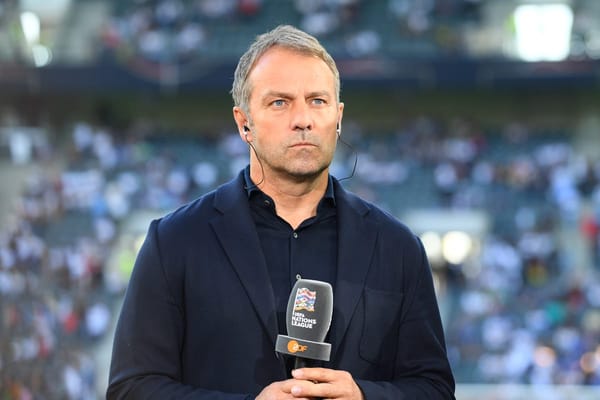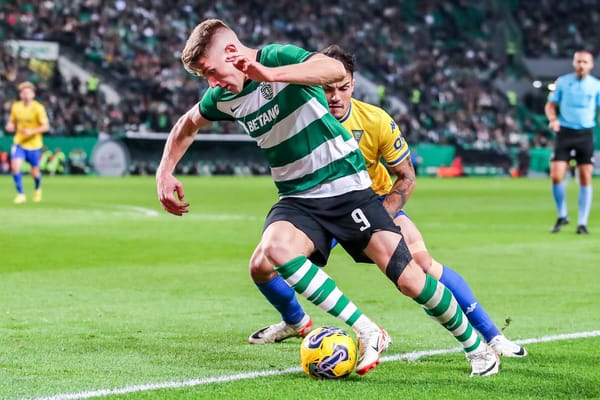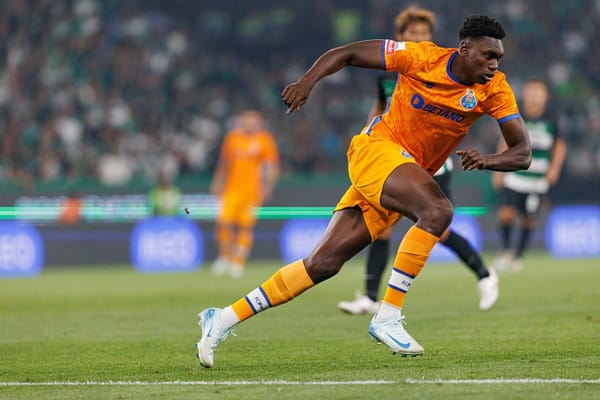The silent project-killer: Barcelona's recurring defensive issues
It's not the new issues that kill projects but the old ones; ones you don't fix right away and they get bigger, rolling like a snowball until they become unmanageable.
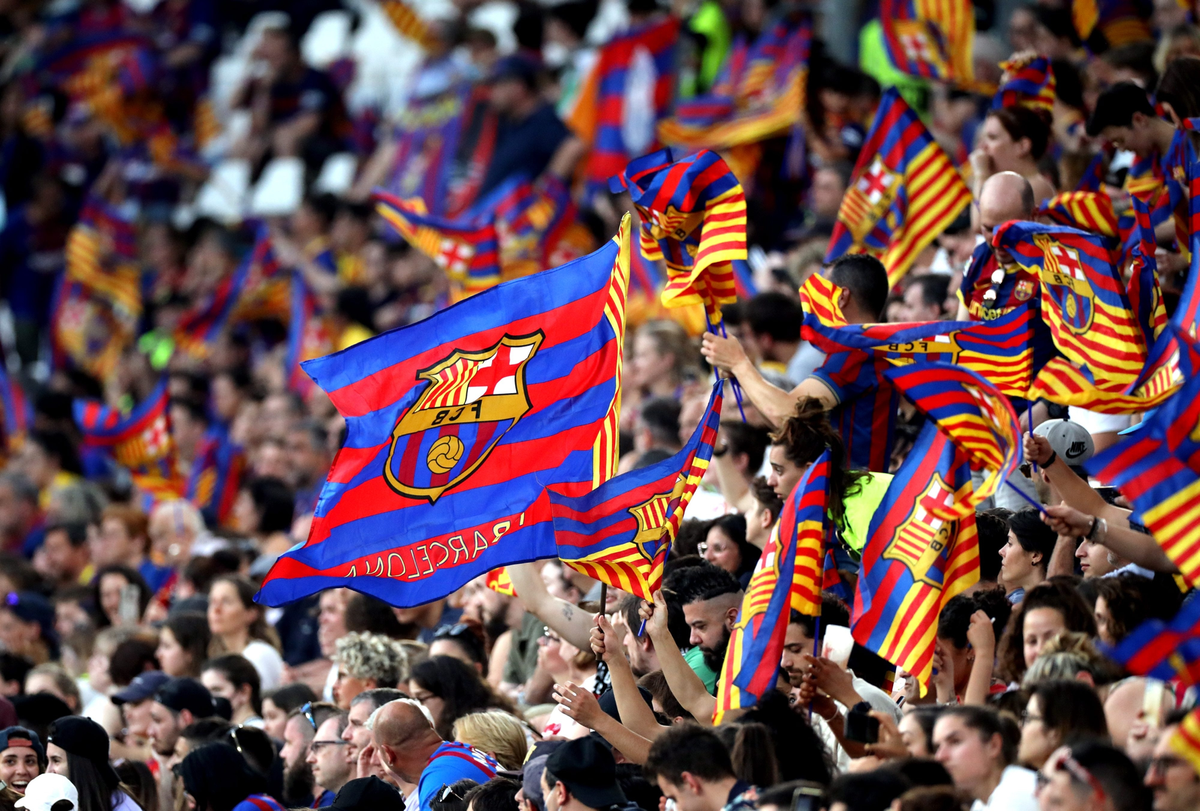
Around a year and a half ago, I wrote a piece analysing some of the biggest issues Xavi's Barcelona project had been facing at the time. The problems of forced verticality, compactness, intensity and defensive awareness were keeping the squad from reaching the required level and while they were still good enough to claim LaLiga, it was in Europe the weaknesses got exposed the most.
Some months after that piece, I wrote another one, claiming it's not the new issues that kill projects but the old ones; ones you don't fix right away and they get bigger, rolling like a snowball until they become unmanageable. But if recurring issues keep getting ignored, they could potentially signal either the inability of the coach to identify them or a failure of coaching in trying to fix them. Both options are worrisome.
So what recurring issues are we seeing from Barcelona in 2023/24?
Data analysis
Before we dig into the tactics, let's consult the data to see what has changed between last season and this one. One thing to note, however, is the sample size; we're only 10 games into 2023/24 and there's a lot more data to analyse for 2022/23. Inevitably, that sample size has a big impact on the statistics. That being said, in the first graphs we'll take a look at Barcelona's defensive territory in both seasons.
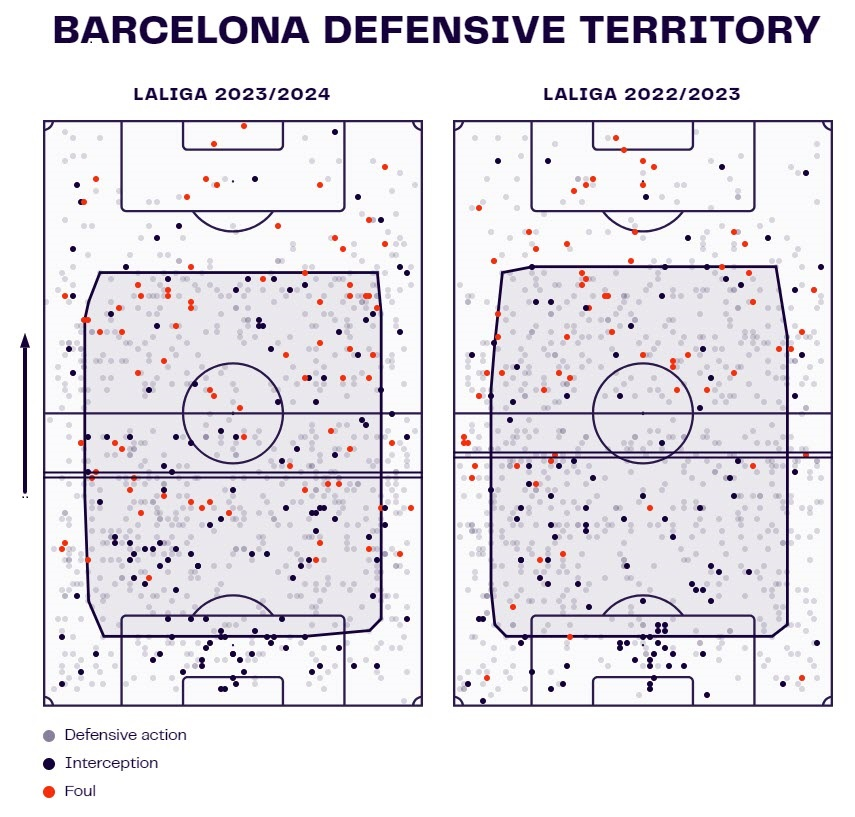
At first glance, there's not much separating the two. However, it seems that Barcelona's defensive line in 2023/24 so far is slightly lower than in 2022/23. Despite that, the upper and lower edges of their defensive territory seem almost identical. This in itself could be an indication of the recurring issue we'll discuss throughout this analysis.
The distances between Barcelona's lines have increased this season and the impenetrable defence we saw in 2022/23 is long gone. The data, while far from complete, is indicating that shift as well. Barcelona are registering lower PPDA values, which suggests higher intensity pressing, and both their gegenpressing index and effectiveness have increased.
By those standards, the high press of 2023/24 is better than the high press of 2022/23.
However, the graph you can see above does not align with the graph below; if the pressing is better and more effective, it should, in theory, indicate an improvement in the defensive record as well. But that's not nearly the case, as can be seen in the graph below. Barcelona in 2023/24 are conceding more expected goals across all the phases and it shows in the actual goals they concede as well. This Barcelona may press better but it doesn't make them better defenders overall.
What it does improve, however, is the offensive output. Pressing has always been one of Xavi's biggest chance creation tools and that remains true to this day. If the press is successful, Barcelona will turn it into a dangerous situation. If it's not successful and the first line gets bypassed, the opposition gets an easy chance instead. It's high risk, high reward.
However, it shouldn't be so black and white; not every failed pressing attempt should result in Barcelona being cut open in a couple of passes. But it happens regularly.
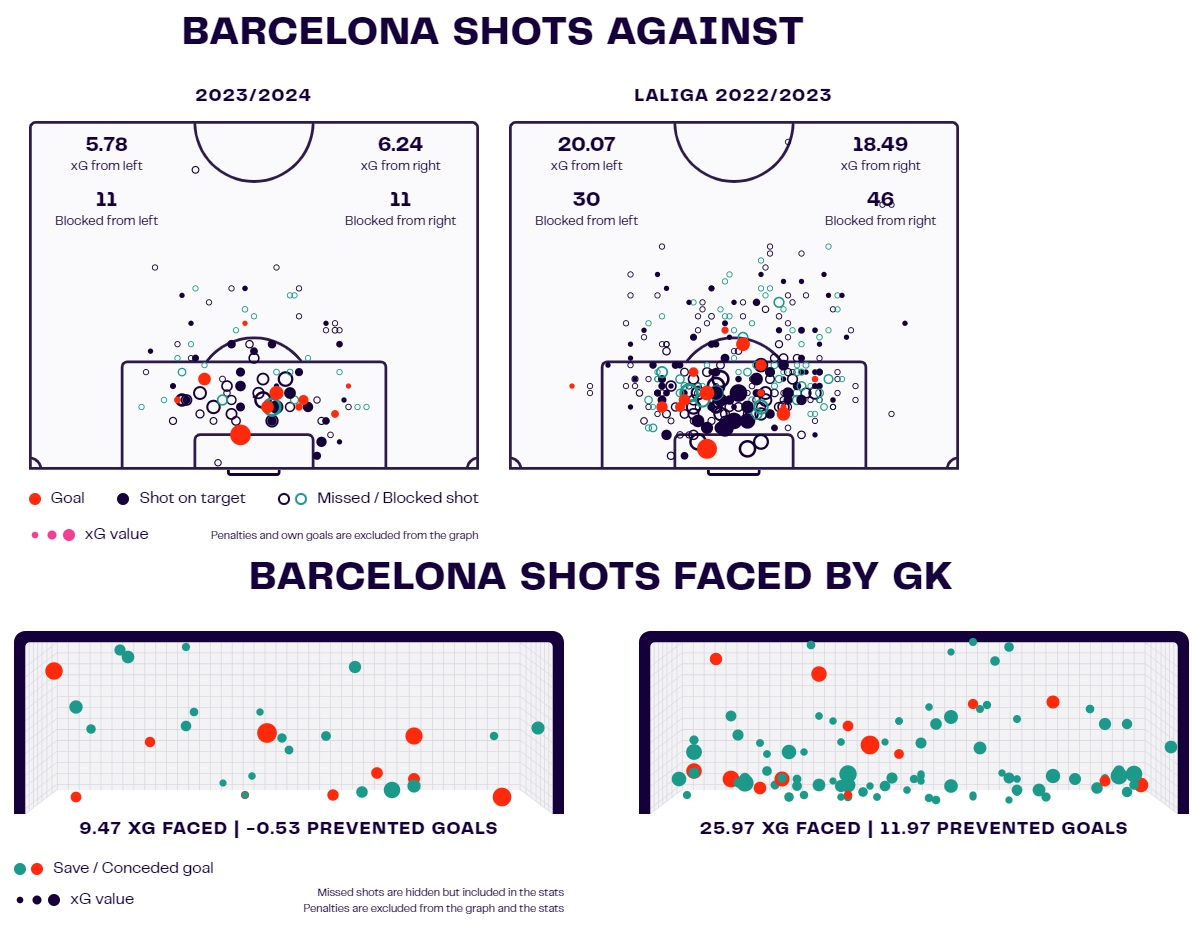
Looking at the shots Barcelona are conceding this term, we see the xG faced this early in the season is already on track to surpass the xG of 22/23. The quality of the opposition's shots has increased too and Barcelona's prevented goals stand at -0.53 with 9.47 xG faced while last season, they were able to prevent 11.97 goals with 25.97 xG faced. If this trend continues, the discrepancy will only rise.
Of course, the impenetrable defence of 22/23 was always going to be nigh-impossible to replicate and while you can't call a juggernaut defensive performance across 38 games a fluke, it was solidity built on individual supremacy more than anything else. In other words, it was individuals carrying the collective, not the other way around. Unfortunately, however, that's also the far less sustainable process between the two.
Speaking of individuals, Barcelona still have many great defenders in the team.
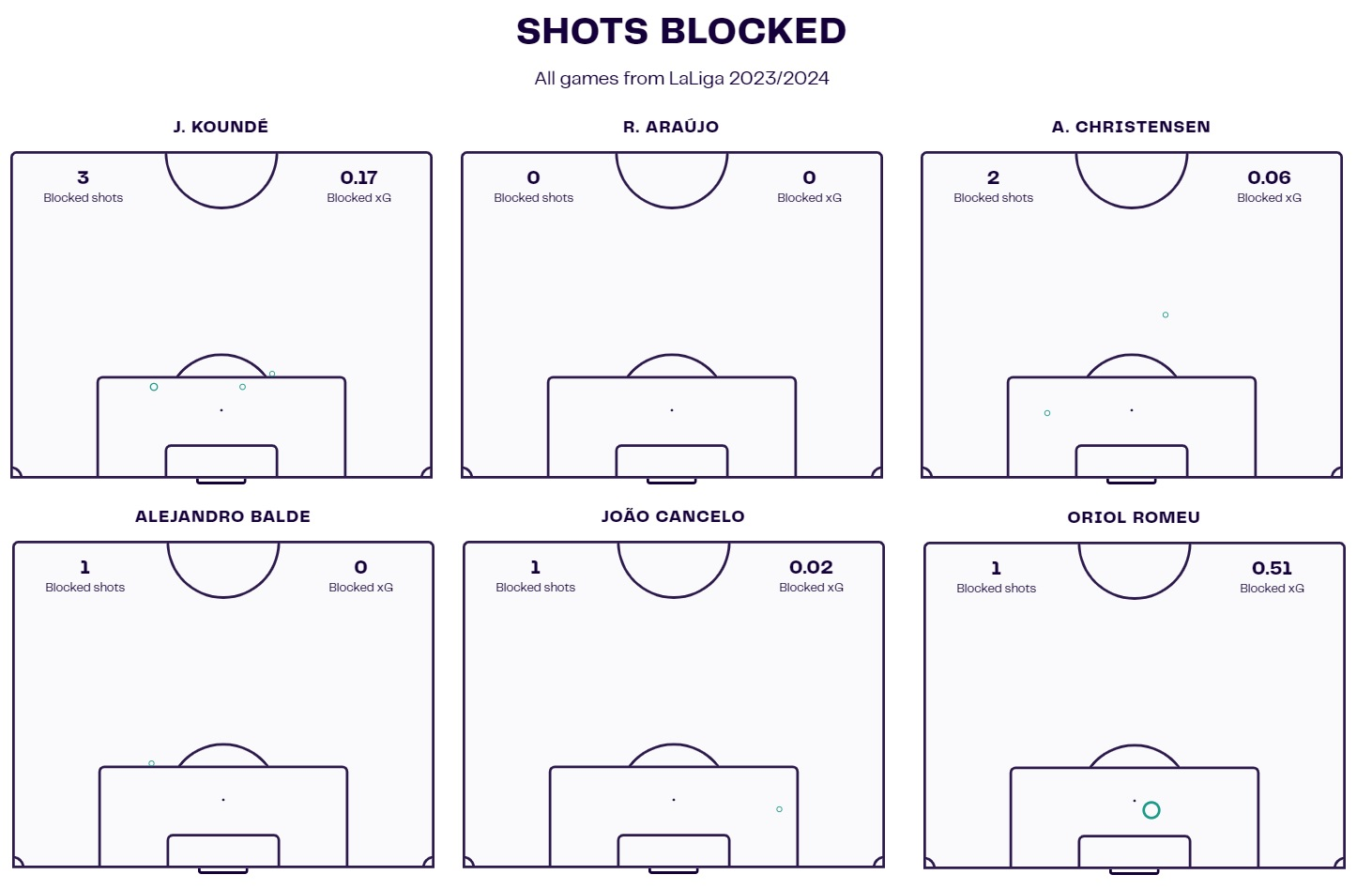
These are the shots blocked by Barcelona's defenders and Oriol Romeu across all the games in LaLiga this season. Naturally, game time differs for all of them, especially for someone like Ronald Araujo who's been out on the sidelines but is still the best pure defender in the team. Jules Kounde and Romeu stand out with 0.17 and 0.51 xG prevented respectively. Of course, this isn't the only metric that measures the value of defenders but it does give us a glimpse of their involvement in key moments.
Individually, these players are still performing quite well; in a vacuum, there's not much you can point out as being the glaring and obvious issue. However, the system is not making it any easier for them at all. And it should. In fact, the system is often putting them into unfavourable situations: Kounde in constant 1v1 races against forwards with momentum, Romeu isolated in the middle of the pitch, and Alejandro Balde having to virtually cover the entire pitch switching from defence to attack and vice versa. These are just some of the suboptimal situations that force Barcelona's defenders into impossible circumstances.
Let's explore them a bit more.
The issues of old
The issues we're about to analyse are damning enough to slow the progress of any team aspiring to reach elite levels but if they are also recurring, they have the potential to kill projects entirely. I do, however, want to say I still support Xavi and believe he's done an incredible job so far but ignoring these flaws won't make them go away. On the contrary, they are what's currently keeping Xavi from turning Barcelona into a juggernaut across all competitions. With them fixed, I have no doubt Xavi's team would be able to steamroll most - if not all - competition they face. But I digress.
Back to the issue at hand, we'll take a look at several examples of Barcelona lacking compactness, lacking the intensity to track runners and lacking the defensive awareness to plug holes before they become major problems. Let's start with the lack of compactness.
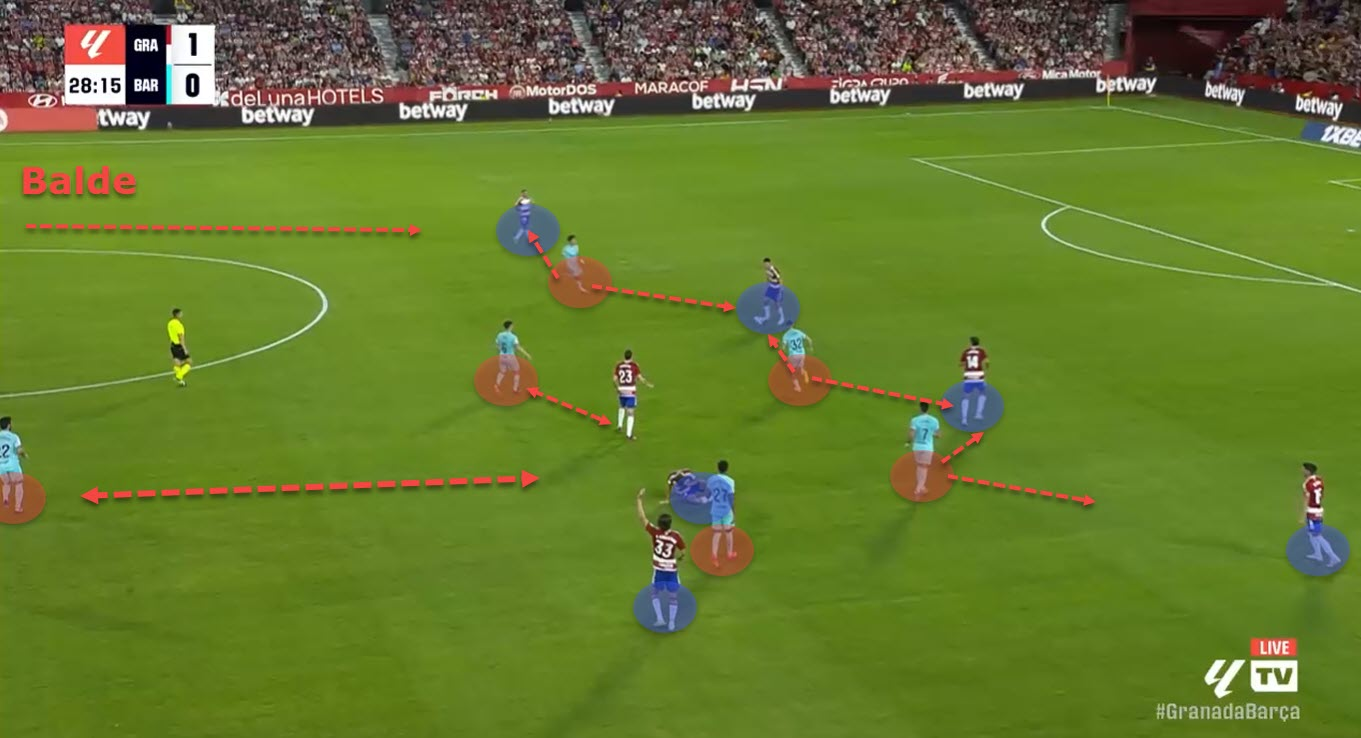
Here's an example of Barcelona pressing Granada and Granada easily playing through that press. There are several reasons for that happening. Firstly, Barcelona are pressing in inferiority; they have five players attempting to recover the ball against seven opposition players. The first line is facing a 3v4 while the second line is facing a 2v3 situation. Support is on the way but due to the distances between their lines being so big, there is no way Balde or Gundogan can be there in time. Barcelona's lack of compactness and pressing with inferior numbers meant Granada could easily cut through their unit and create a dangerous chance.
And that game in particular offered several excellent examples of these issues. But lets look at another difficult game; the one against Porto in the Champions League. That night, Barcelona were fortunate not to concede because their defensive structure was leaky all game long. Notice the same issues in the following example below.

Here, Barcelona are once again pressing with inferior numbers, pushing only three players forward while keeping the distances between them far too big. Essentially every Porto player in the picture on the left can comfortably receive the ball with enough space and time to execute his next action. Inevitably, that's exactly what happens.
The ball is quickly played into the dropping midfielder, who can easily turn and advance with the ball at his feet. But that's not all; the lack of intensity and tracking the runners meant Porto could easily create isolations out wide and exploit the space behind the defenders while the lack of compactness gave them enough space and time to then capitalise on it. In as many as two passes, Barcelona are entirely cut open.
And the worst thing about this is how easily the opposition can create overloads against such a dysfunctional defensive structure.
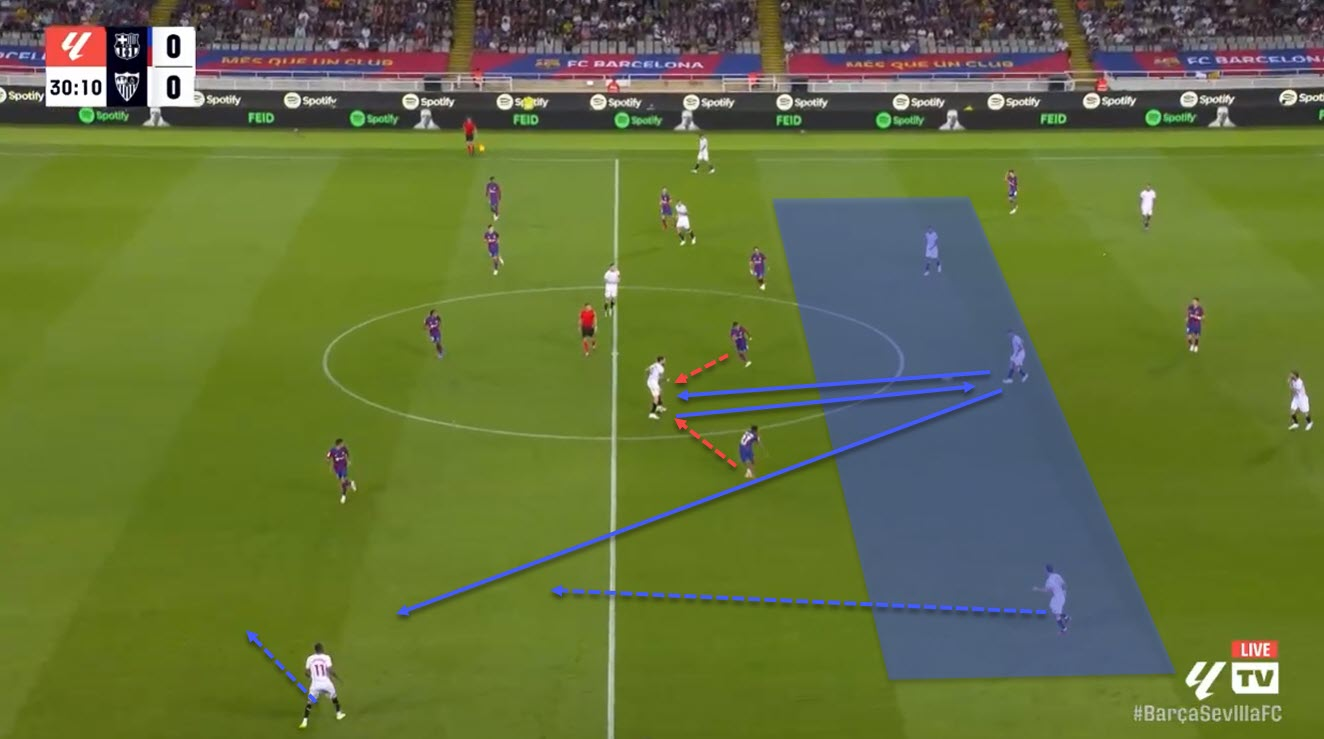
Take this sequence as a great example. The distance between Barcelona's second and third lines is far too big, meaning the pressing unit is cut off from the rest of the team. That gives Sevilla all the time and space in the world to manipulate the block, execute the next action and create the overloads out wide. It starts with bypassing the first line, then sending the ball down the middle to force Barcelona to collapse, only for the ball to be played back into the free midfielder who can now easily use the open channel towards his teammate on the left.
Within seconds and a couple of simple passes, Sevilla carved Barcelona open and created a dangerous opportunity to score a goal. These things happen and sometimes the plaudits have to be given to the attacker; by all means, despite looking easy, this wasn't an easy sequence to pull off. However, it's the recurring nature of such actions against Barcelona that indicates a fault in the system, not a one-off blip on the radar.

Here's Barcelona pressing Granada with inferior numbers and no compactness, resulting in easily accessible wide overloads. In truth, all three of these teams have had an easy job creating wide overloads precisely for those same issues: lack of compactness, no intensity and lack of defensive awareness. Porto, too, created most of their chances because Barcelona couldn't close down the players in time as their defenders had large distances to cover to reach their markers in the first place.
This is one of the biggest traps of the man-marking scheme; if you're highly reliant on man-marking then you're also highly reliant on intensity in tracking. Using the former without the latter results in a unit that's easily manipulated and ultimately bypassed.
Here's the Porto example.

Can you recognise the pattern again? The distance between the lines is huge, meaning Barcelona are pressing without a compact unit, the intensity to close down the receivers is lacking and Porto easily progress and inevitably create an overload on the flanks. Rinse and repeat.
The final thing I'd like to highlight is the rest defence issue. Possession-heavy sides will always be susceptible to counter-attacks; even the elite teams whose in and out-of-possession structures may eclipse that of Barcelona are prone to suffering against them. So while prevention is key, sometimes all you can do is minimise the damage. One way to do that is through a stable rest defence structure or in other words, through the way you organise your safety net in possession.
Barcelona's rest defence has been caught lacking on a number of occasions this season and is part of the underlying defensive issues.
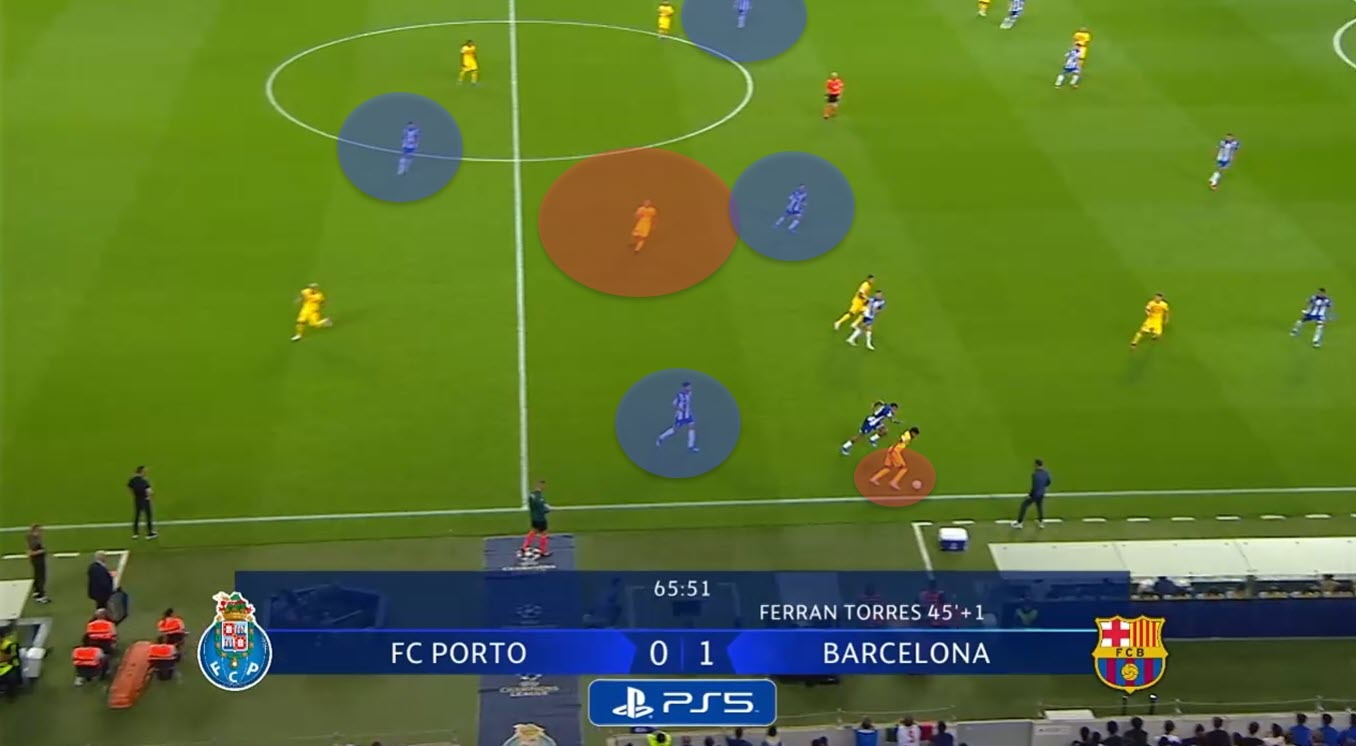
In this final example against Porto, Barcelona are attacking down the right flank but are about to lose the ball. In that moment, how compact are they to prevent a quick turnover? Who are the players maintaining their rest defence? Are they primed to stop the isolations? Unfortunately, this is another example of a sequence that quickly turns dire for Barcelona.
The lack of compactness combined with a poor safety net in possession is generally a recipe for disaster for any team, let alone a highly attacking possession-heavy side like Barcelona. And that, too, is a recurring issue that will need to be addressed sooner rather than later.
Final remarks
Xavi's progress so far has been nothing short of admirable. But we cannot ignore the issues that he's still facing; ignoring them won't make them go away and it's exactly those issues that have so far been bogging Barcelona down. They are a team capable of achieving greatness and while they have the potential for it, the reality is they are still not there yet.
That doesn't mean they can't or won't get there eventually. And the best way to start is by fixing the recurring issues that can kill the project Xavi has worked so hard to build.

